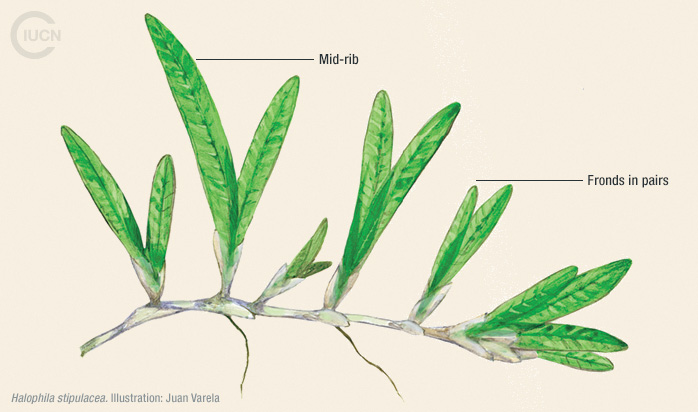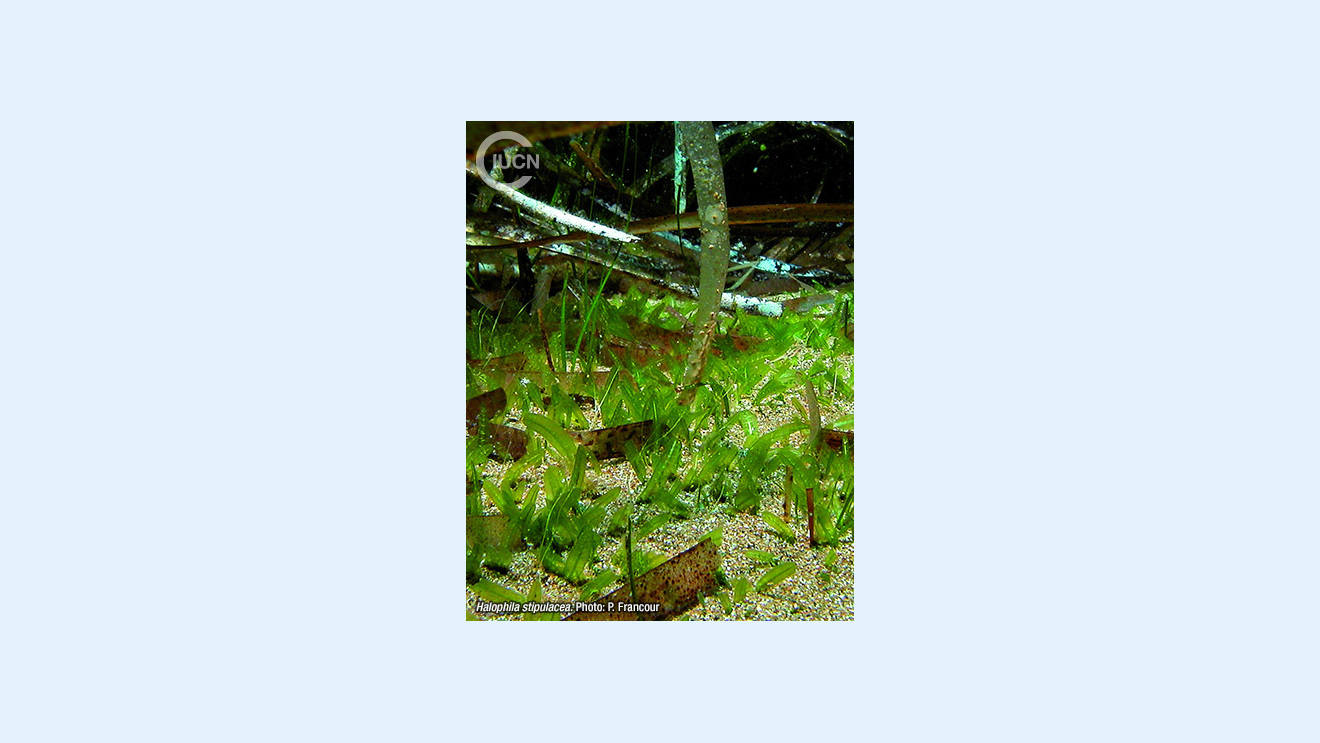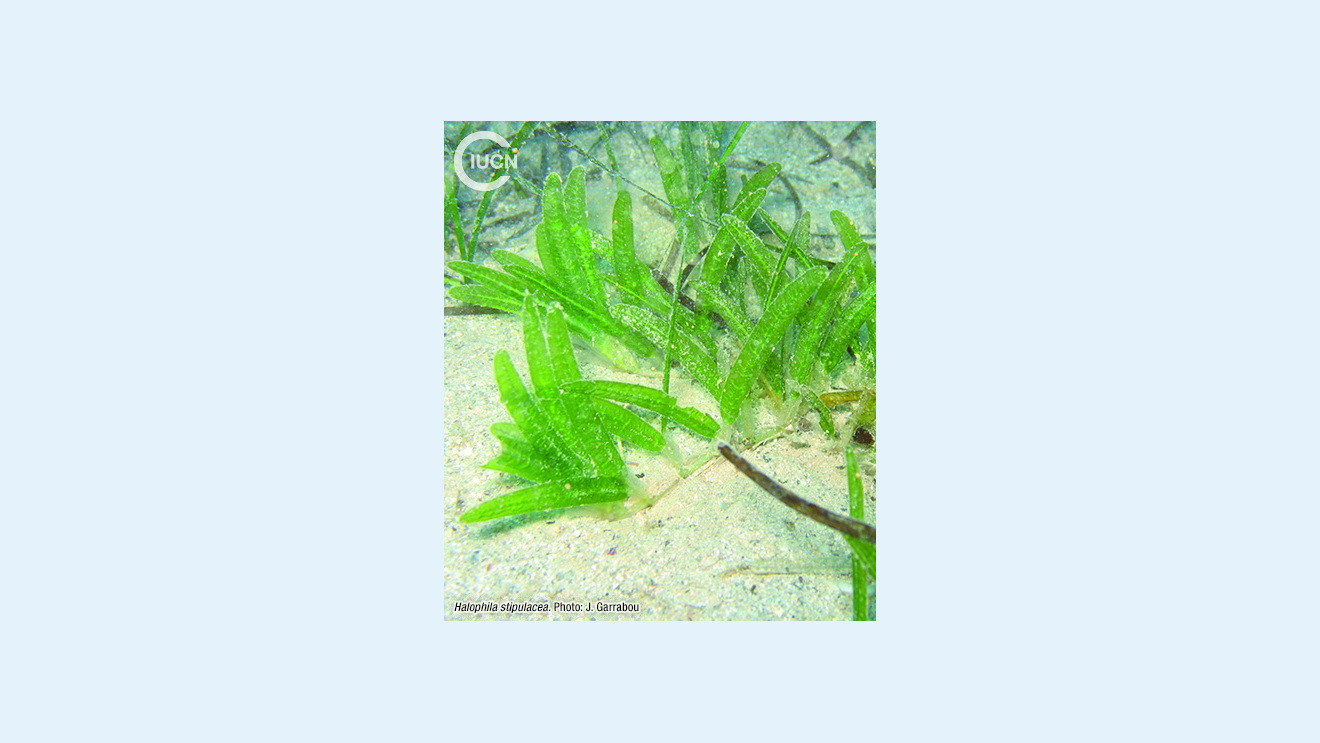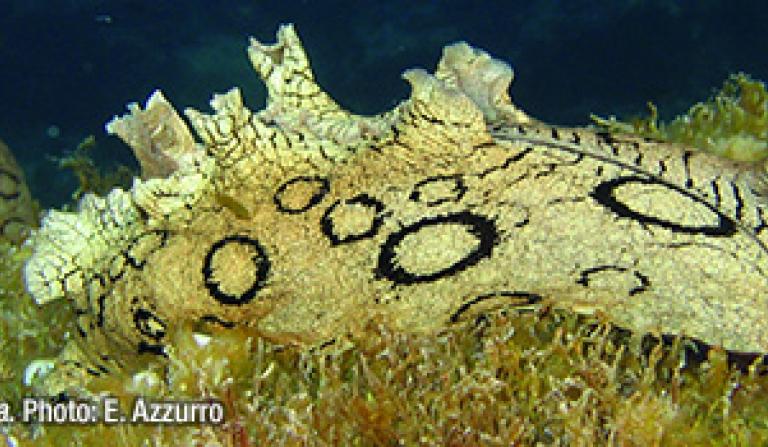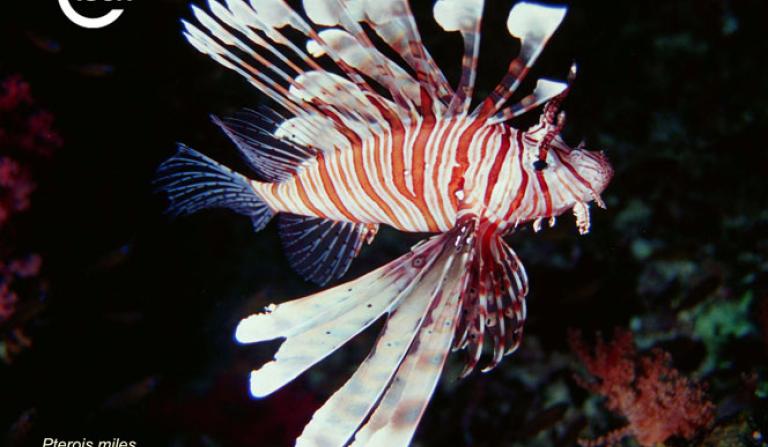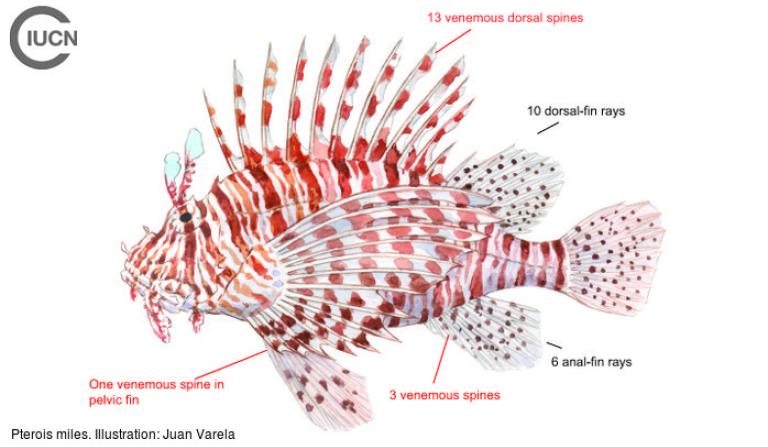Halophila stipulacea
Information
In its original range, Halophila stipulacea grows in a wide range of environmental conditions and coastal substrates. However, this species has a much narrower ecological distribution in the eastern Mediterranean, being limited to soft substrates (sand and mud) only.
It can be found forming monospecific or mixed meadows with the native sea grass, Cymodocea nodosa.
Male and female plants are separate, producing solitary male or female flowers at each leaf node. It is a fast-growing species and produces many seeds, colonizing and spreading rapidly from small populations. In the Mediterranean the main flowering season occurs in July–August, with fruits ripening in September.
The seagrass species native to the Mediterranean Sea (Posidonia oceanica, Cymodocea nodosa, Zostera noltii and Z. marina) are characterized by longer leaves arranged in groups (not pairs), with older leaves on the outside.
Caulerpa prolifera, a native green alga, has dark green, oval-shaped leaf blades that are about 1.5–2.5 cm wide and 6–15 cm long. The leaves of this species grow from a few tough stolons, emerging perpendicularly at 1–2 cm intervals; they are usually oval or linearly elongated with a smooth edge. C. prolifera is distinguished from H. stipulacea by the lack of a prominent mid-rib along the length of the leaves.
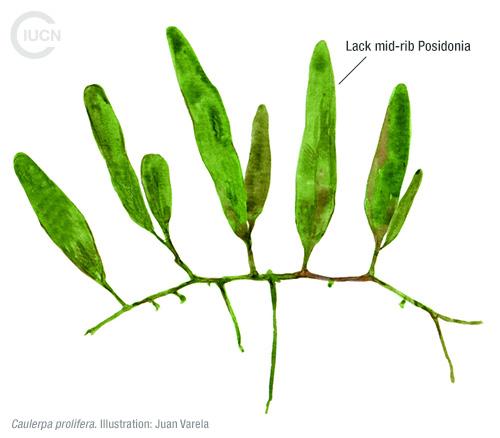
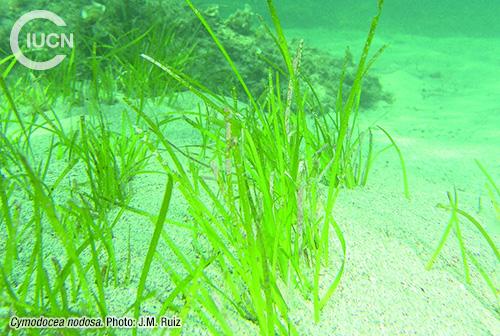
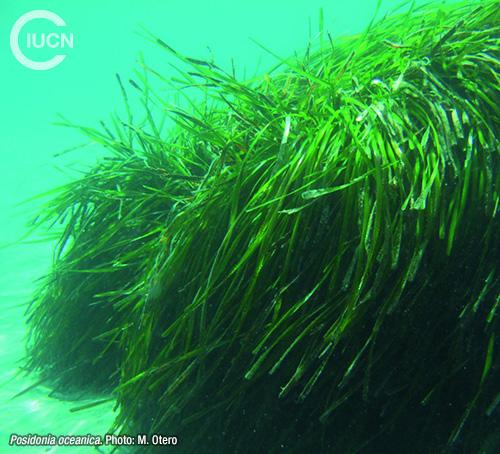
Native to the Indian Ocean, H. stipulacea entered the Mediterranean from the Red Sea after the opening of the Suez Canal in 1869. The Aegean populations may have originated from fragments carried by Greek fishing boats, and spread thereafter probably by ship transport.
Studies suggest that H. stipulacea is capable of displacing native seagrasses such as Posidonia oceanica and Cymodocea nodosa and their associated communities. Further research is needed to confirm this and provide further details of the extent of these interactions. H. stipulacea beds expand rapidly and tolerate a wide range of environmental conditions, potentially threatening local and regional biodiversity. This species is included among the 100 Worst Invasive Alien Species in the Mediterranean.
Unknown.
http://www.europe-aliens.org/pdf/Halophila_stipulacea.pdf
Malm T., 2006. Reproduction and recruitment of the seagrass Halophila stipulacea. Aquatic Botany. 85 (4), 347-351.
Sghaier, Y. R., et al., 2011. Occurrence of the seagrass Halophila stipulacea (Hydrocharitaceae) in the southern Mediterranean Sea. Botanica Marina 54: 575–582.
